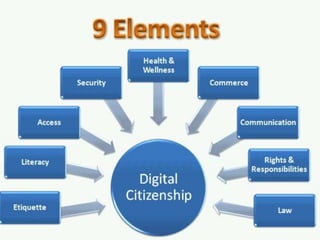Parentsggs
- 2. Housekeeping Sheryl Nussbaum-Beach Co-Founder & CEO Powerful Learning Practice, LLC http://plpnetwork.com sheryl@plpnetwork.com 21st Century Collaborative, LLC http://21stcenturycollaborative.com
- 5. The world is changing...
- 6. 6 Trends for the digital age Analogue Digital Tethered Mobile Closed Open Isolated Connected Generic Personal Consuming Creating Source: David Wiley: Openness and the disaggregated future of higher education Sherry Turkle is Abby Rockefeller Mauzé Professor of the Social Studies of Science and Technology in the Program in Science, Technology, and Society at MIT and the founder (2001) and current director of the MIT Initiative on Technology and Self.
- 7. By the year 2011 80% of all Fortune 500 companies will be using immersive worlds– Gartner Vice President Jackie Fenn Libraries 2.0 Management 2.0 Education 2.0 Warfare 2.0 Government 2.0 Vatican 2.0 Credit: Hugh MacLeod, gapingvoid Everything 2.0
- 8. dangerouslyirrelevant.org Our kids have tasted the honey. http://www.dangerouslyirrelevant.org/2009/02/a-taste-of-honey.html
- 9. • THE CONNECTED EDUCATOR The Disconnect “Every time I go to school, I have to power down.” --a high school student
- 10. It is estimated that 1.5 exabytes of unique new information will be generated worldwide this year. That’s estimated to be more than in the previous 5,000 years. Knowledge Creation
- 11. For students starting a four-year technical or higher education degree, this means that . . . half of what they learn in their first year of study will be outdated by their third year of study.
- 13. What about the world and society has changed since you went to school? What about students has changed since you went to school? What about schools has changed or not changed since you went to school?
- 14. Source: enGauge 21st Century Skills
- 15. • THE CONNECTED EDUCATOR
- 16. • THE CONNECTED EDUCATOR
- 17. FORMAL INFORMAL You go where the bus goes You go where you choose Jay Cross – Internet Time
- 19. 19 Free range learners Free-range learners choose how and what they learn. Self- service is less expensive and more timely than the alternative. Informal learning has no need for the busywork, chrome, and bureaucracy that accompany typical classroom instruction.
- 20. The NCTE Definition of 21st Century Literacies Develop proficiency with the tools of technology Build relationships with others to pose and solve problems collaboratively and cross-culturally Design and share information for global communities to meet a variety of purposes Manage, analyze and synthesize multiple streams of simultaneous information Create, critique, analyze, and evaluate multi-media texts Attend to the ethical responsibilities required by these complex environments
- 22. Play — the capacity to experiment with one’s surroundings as a form of problem- solving Performance — the ability to adopt alternative identities for the purpose of improvisation and discovery Simulation — the ability to interpret and construct dynamic models of real-world processes Appropriation — the ability to meaningfully sample and remix media content Multitasking — the ability to scan one’s environment and shift focus as needed to salient details. Distributed Cognition — the ability to interact meaningfully with tools that expand mental capacities .
- 23. Collective Intelligence — the ability to pool knowledge and compare notes with others toward a common goal Judgment — the ability to evaluate the reliability and credibility of different information sources Transmedia Navigation — the ability to follow the flow of stories and information across multiple modalities Networking — the ability to search for, synthesize, and disseminate information Negotiation — the ability to travel across diverse communities, discerning and respecting multiple perspectives, and grasping and following alternative norms. .
- 24. “Understanding how networks work is one of the most important literacies of the 21st Century.” - Howard Rheingold http://www.ischool.berkeley.edu
- 25. Screen Time: How Much is Too much for Your Kids?
- 28. Shifts focus of literacy from individual expression to community involvement. Students become producers, not just consumers of knowledge.
- 29. Shifts focus of literacy from individual expression to community involvement.
- 30. Connected Learning The computer connects the student to the rest of the world Learning occurs through connections with other learners Learning is based on conversation and interaction Stephen Downes
- 31. Connected Learner Scale Share (Publish & Participate) – Connect (Comment and Cooperate) – Remixing (building on the ideas of others) – Collaborate (Co-construction of knowledge and meaning) – Collective Action (Social Justice, Activism, Service Learning) –
- 34. “All in all, I enjoyed this student-directed study. It helped me think outside the box, and I got the chance to research deep into my topic of childhood poverty…I was more focused on learning the most I could about my topic. I don’t think that there was anything I didn’t like about this kind of project, and as always, I’m excited to continue using technology to enhance my learning experiences.” ~8th grade SGGS student
- 36. Real Question is this: Are we willing to change- to risk change- to meet the needs of the precious folks we serve? Can you accept that Change (with a “big” C) is sometimes a messy process and that learning new things together is going to require some tolerance for ambiguity.
- 37. Last Generation
Editor's Notes
- Licensed under a Creative Commons attribution-share alike license.http://creativecommons.org/licenses/by-sa/3.0Scott McLeod, J.D., Ph.D.scottmcleod.net/contactdangerouslyirrelevant.orgschooltechleadership.orgOur kids have tasted the honey.www.flickr.com/photos/jahansell/251755048
- ISB’s vision





































